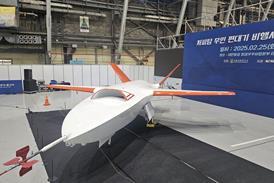Sir - With reference to your editorial and items about recent accidents and poor crew standards ("Admit it", Flight International, 13-19 November, P3,14, 30 and 31) why not build into the aircraft-operating system the facility for the aircraft manufacturer to make checks?
During the pre-flight checklist, the aircraft computer could present the crew with several basic random questions from a database. If the correct answers were not provided, then the aircraft would respond in an appropriate way.
One out of four wrong would produce an amber warning: "check technical manual". Two out of four wrong would result in a flashing red and all questions would have to be answered again to cancel. Three wrong would trigger a flashing red and an alarm bell which would also ring in the flight manager's office. Four wrong answers would, if ignored, retract the undercarriage at 60kt (110km/h) on take off.
A horse has the option of throwing off its rider if it disagrees with command decisions. Maybe increasingly intelligent aircraft should have the same choice.
Cedric Flood
Retired BA Captain
Merseyside, UK
Sir - Now that dynamics and static air pressure sensing play such a crucial role in aircraft safety, surely it is necessary to be able to ensure that these sensors are functioning correctly before rushing down the runway, often into cloud or darkness.
ATC secondary radar can also be affected, compromising safe separation and advice to pilots.
Jack Karran
London, UK
Sir - Many years ago Boeing, concerned about accident trends, decided that certain optional extras on their aircraft would become standard and that they would provide initial training to customer airlines part of the package. This action, along with others, had a significant impact on safety levels.
It seems incredible that aircraft sharing the same airspace are still using altimeters calibrated in different units and that so-called international airports do not have basic facilities such as secondary radar.
Considering the large claims following aircraft collision it is surprising that the insurance underwriters do not appear to be taking more interest in the facilities provided in the aircraft and on the ground. If the insurance companies insisted that, as part of their cover, all large public transport aircraft were fitted with TCAS and could only operate to and from airports with certain minimum standards, I am sure we would see fairly swift provision of such technologies.
The recent accident at Delhi highlights the hazards associated with aircraft flying the same geographical inbound and outbound tracks. Years ago there was a lot more random separation built into the system due to the inaccuracies of navigation systems, altimeters and autopilots. Perhaps there is a case for aircraft fitted with area navigational facilities to deliberately fly a mile or two off the correct geographical track in order to put some random separation back into the system.
Robert Taylor
Nottingham, UK
Source: Flight International























